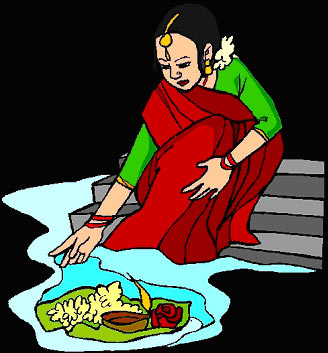AN APPEAL FOR SUPPORT
- We seek your support to meet expenses relating to some new and essential software, formatting of articles and books, maintaining and running the journal through hosting, correrspondences, etc. You can use the PAYPAL link given above. Please click on the PAYPAL logo, and it will take you to the PAYPAL website. Please use the e-mail address mthirumalai@comcast.net to make your contributions using PAYPAL.
Also please use the AMAZON link to buy your books. Even the smallest contribution will go a long way in supporting this journal. Thank you. Thirumalai, Editor.
BOOKS FOR YOU TO READ AND DOWNLOAD FREE!
- A STUDY OF THE SKILLS OF READING
COMPREHENSION IN ENGLISH DEVELOPED BY STUDENTS OF STANDARD IX IN THE SCHOOLS IN TUTICORIN DISTRICT, TAMILNADU ...
A. Joycilin Shermila, Ph.D. - A Socio-Pragmatic Comparative Study of Ostensible Invitations in English and Farsi ...
Mohammad Ali Salmani-Nodoushan, Ph.D. - ADVANCED WRITING - A COURSE TEXTBOOK ...
Parviz Birjandi, Ph.D.
Seyyed Mohammad Alavi, Ph.D.
Mohammad Ali Salmani-Nodoushan, Ph.D. - TEXT FAMILIARITY, READING TASKS, AND ESP TEST PERFORMANCE: A STUDY ON IRANIAN LEP AND NON-LEP UNIVERSITY STUDENTS - A DOCTORAL DISSERTATION ...
Mohammad Ali Salmani-Nodoushan, Ph.D. - A STUDY ON THE LEARNING PROCESS OF ENGLISH
BY HIGHER SECONDARY STUDENTS
WITH SPECIAL REFERENCE TO DHARMAPURI DISTRICT IN TAMILNADU ...
K. Chidambaram, Ph.D. - SPEAKING STRATEGIES TO OVERCOME COMMUNICATION
DIFFICULTIES IN THE TARGET LANGUAGE SITUATION - BANGLADESHIS IN NEW ZEALAND ...
Harunur Rashid Khan - THE PROBLEMS IN LEARNING MODAL AUXILIARY VERBS IN ENGLISH AT HIGH SCHOOL LEVEL ...
Chandra Bose, Ph.D. Candidate - THE ROLE OF VISION IN LANGUAGE LEARNING
- in Children with Moderate to Severe Disabilities ...
Martha Low, Ph.D. - SANSKRIT TO ENGLISH TRANSLATOR ...
S. Aparna, M.Sc. - A LINGUISTIC STUDY OF ENGLISH LANGUAGE CURRICULUM AT THE SECONDARY LEVEL IN BANGLADESH - A COMMUNICATIVE APPROACH TO CURRICULUM DEVELOPMENT by
Kamrul Hasan, Ph.D. - COMMUNICATION VIA EYE AND FACE in Indian Contexts by
M. S. Thirumalai, Ph.D. - COMMUNICATION
VIA GESTURE: A STUDY OF INDIAN CONTEXTS by M. S. Thirumalai, Ph.D. - CIEFL Occasional
Papers in Linguistics,
Vol. 1 - Language, Thought
and Disorder - Some Classic Positions by
M. S. Thirumalai, Ph.D. - English in India:
Loyalty and Attitudes
by Annika Hohenthal - Language In Science
by M. S. Thirumalai, Ph.D. - Vocabulary Education
by B. Mallikarjun, Ph.D. - A CONTRASTIVE ANALYSIS OF HINDI
AND MALAYALAM
by V. Geethakumary, Ph.D. - LANGUAGE OF ADVERTISEMENTS
IN TAMIL
by Sandhya Nayak, Ph.D. - An Introduction to TESOL:
Methods of Teaching English
to Speakers of Other Languages
by M. S. Thirumalai, Ph.D. - Transformation of
Natural Language
into Indexing Language:
Kannada - A Case Study
by B. A. Sharada, Ph.D. - How to Learn
Another Language?
by M.S.Thirumalai, Ph.D. - Verbal Communication
with CP Children
by Shyamala Chengappa, Ph.D.
and M.S.Thirumalai, Ph.D. - Bringing Order
to Linguistic Diversity
- Language Planning in
the British Raj by
Ranjit Singh Rangila,
M. S. Thirumalai,
and B. Mallikarjun
REFERENCE MATERIAL
- UNIVERSAL DECLARATION OF LINGUISTIC RIGHTS
- Lord Macaulay and
His Minute on
Indian Education - In Defense of
Indian Vernaculars
Against
Lord Macaulay's Minute
By A Contemporary of
Lord Macaulay - Languages of India,
Census of India 1991 - The Constitution of India:
Provisions Relating to
Languages - The Official
Languages Act, 1963
(As Amended 1967) - Mother Tongues of India,
According to
1961 Census of India
BACK ISSUES
- FROM MARCH 2001
- FROM JANUARY 2002
- INDEX OF ARTICLES
FROM MARCH, 2001
- DECEMBER 2006 - INDEX OF AUTHORS
AND THEIR ARTICLES
FROM MARCH, 2001
- DECEMBER 2006
- E-mail your articles and book-length reports (preferably in Microsoft Word) to mthirumalai@comcast.net.
- Contributors from South Asia may send their articles to
B. Mallikarjun,
Central Institute of Indian Languages,
Manasagangotri,
Mysore 570006, India or e-mail to mallikarjun@ciil.stpmy.soft.net - Your articles and booklength reports should be written following the MLA, LSA, or IJDL Stylesheet.
- The Editorial Board has the right to accept, reject, or suggest modifications to the articles submitted for publication, and to make suitable stylistic adjustments. High quality, academic integrity, ethics and morals are expected from the authors and discussants.
Copyright © 2006
M. S. Thirumalai
PRISTINE USE OF LANGUAGE - SANSKRIT STOTRAS
V. V. B. Rama Rao, Ph.D.
PRAISE, SUPPLICATION AND INVOCATION
Students of English Literature would readily identify these lines as forming a part of Milton's invocation to the Divine Muse or God at the beginning of his epic. That a work of sustained high seriousness should begin with a praise and supplication is not unique to English. Much, much earlier, this has been the tradition in Sanskrit literature, as it has been in Latin and Greek literatures, much later. Going by this invocation alone, Milton's epic can be viewed basically as a devotional or religious work.

PRAYER
Prayer is a universal category applicable to all climes and all regions and even the oldest of civilizations knew that there is a Supreme Being and the Being can be propitiated by prayer though there might have been several different other ways too. Prayer comes from Faith and Devotion. Fortunately these are not related to the devotee's societal status, riches or any other accomplishments. But for this, Faith could not have sustained itself down the millennia. But for this the scriptures in any religion would not have stood the ravages of time. Sometimes one is struck with the devotion of the poorest of the poor. Religion and faith draw perhaps the unlettered ones more than those of the upper strata.

IN PRAISE OF SHIVA - AN OFFERING FROM ADI SANKARA
Before taking up for a rapid overview devotional compositions, permit me to introduce the topic with a unique composition, which brings out the eminence of superb intellectuality in Sanskrit devotional compositions. In fact this is the trait of the Supreme Being and shared by Man's realized soul. This composition is a sestet (composition of six stanzas) entitled Nirvanashatkam. First, a transliterated text and then a rough and ready rendering.
No fear of death, no distinction of species or caste, no father, no mother, no birth for Me, no relations, no friends, no preceptor or disciple for Me, I am the form of Supreme Bliss perceived, ever the pristine, ever auspicious. I am Shiva.
No thought, no form have I; free lord I am of all organs: no attachment no detachment for Me, no bondage and no liberation for Me, I am the form of Supreme Bliss perceived, ever the pristine, ever auspicious. I am Shiva.
THE STRUCTURE OF PROPITIATORY VERSES
All these compositions have a similar, if not identical structure. There are five aspects to be noted:
- Conceptualization
- Compactness of the composition
- Concretization of the Abstract for the benefit of the lay but devout
- Crystallization to give the essence in a small capsule
- Usually mentioning the fruit of the repetition/rendering or reading the stotra in terms of earthly benefits. This part is referred to as Phalasahruti.
PLEASE CLICK HERE TO READ THE ENTIRE ARTICLE IN A PRINTER-FRIENDLY VERSION.
Heritage Language Learning - Parents' Perceptions and Children's Attitude -
A Study of Afghan Immigrants in the United States | Pristine Use of Language - Sanskrit Stotras |Resurgence of Hindi in the Wake of Globalisation | Techniques Utilized for Vocabulary Acquisition | Speaking Anxiety of Students of Medicine in English Language Classes -
Reported Sources and Solutions | HOME PAGE OF DECEMBER 2006 ISSUE | HOME PAGE | CONTACT EDITOR
V. V. B. Rama Rao, Ph.D.
C-7 New Township, BTPS Badarpur
New Delhi 110 004
India
vvbramarao@yahoo.com
- Send your articles
as an attachment
to your e-mail to
mthirumalai@comcast.net. - Please ensure that your name, academic degrees, institutional affiliation and institutional address, and your e-mail address are all given in the first page of your article. Also include a declaration that your article or work submitted for publication in LANGUAGE IN INDIA is an original work by you and that you have duly acknolwedged the work or works of others you either cited or used in writing your articles, etc. Remember that by maintaining academic integrity we not only do the right thing but also help the growth, development and recognition of Indian scholarship.

